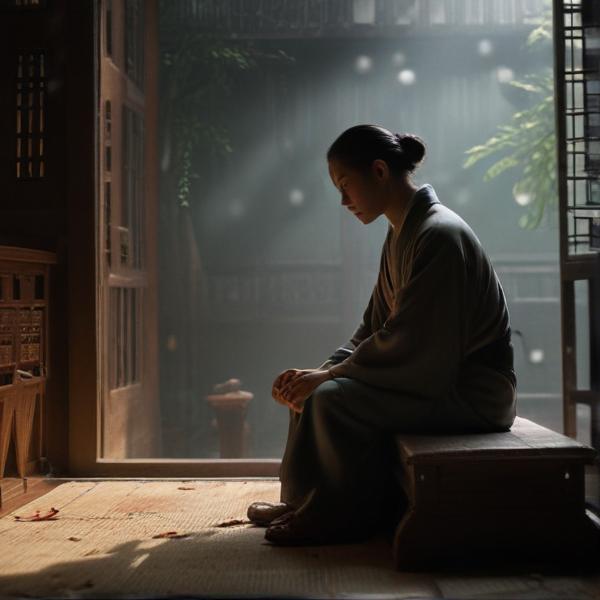基本信息 (Basic Information)
含义与用法 (Meanings & Usage)
中文核心释义 (Core Chinese Meaning): 计时的器具,如钟表;钟形的青铜礼器;量词,表示时间的整点(如“七点钟”);还指专注、集中(如“钟情”)。
英文核心释义 (Core English Meaning): clock, bell; a kind of ancient bronze vessel; measure word for o’clock; also means to concentrate or focus (as in 'to be fond of').
象形意义 / 为何这么写 (Pictographic Meaning / Writing Rationale)
文言文释义 (Classical Chinese Meaning)
文言文中“钟”多指青铜礼器或乐器,偶作计时器用义。与现代意义相近。In classical Chinese, '钟' mainly referred to bronze ritual vessels or musical instruments, and sometimes as a timepiece. Similar to modern meaning.
深入学习 (In-depth Study)
字源故事 (Origin Story)
字形演变 (Character Evolution)
常用词语和例句 (Common Words & Examples)
时钟 (clock)
墙上的时钟走得很准。
Eng: The clock on the wall keeps very accurate time.
闹钟 (alarm clock)
他每天早上六点被闹钟叫醒。
Eng: He is woken up by the alarm clock every morning at six.
钟爱 (to deeply love, to be very fond of)
她非常钟爱阅读。
Eng: She is deeply fond of reading.
相关成语 (Related Idioms)
相关成语信息待补充。Related idiom information pending.
多语言翻译 (核心释义) (Translations (Core Meaning))
- French: horloge, cloche
- German: Uhr, Glocke
- Spanish: reloj, campana
- Italian: orologio, campana
- Portuguese: relógio, sino
- Russian: часы, колокол
- Arabic: ساعة، جرس
- Persian: ساعت، زنگ
- Dutch: klok, bel
- Polish: zegar, dzwon
- Vietnamese: đồng hồ, chuông
- Ukrainian: годинник, дзвін
视频学习资源 (Video Learning Resources)
通过以下链接在热门视频网站搜索 "钟" 的更多讲解:
Search for more explanations of "钟" on popular video sites:
- 在 Bilibili.com 搜索 "钟 字源 说文解字" (Search on Bilibili)
- 在 YouTube.com 搜索 "钟 character origin etymology" (Search on YouTube)
网络参考 (Web References for "钟") ()
网络内容摘要 (Web Content Summary):
```html核心含义与字形起源:“钟”(简体,繁体为“鐘”或“锺”)最初指大型青铜乐器,如编钟,是古代重要的打击乐器。在汉字演变中,“钟”字起源于金文和小篆,字形象征乐器,极具象形意义。 Core Meaning & Etymology: "钟" (simplified, traditional: "鐘"/"锺") originally refers to a large bronze musical instrument (chime or bell), an important percussion instrument in ancient China. Its character evolved from bronze inscriptions (jinwen) and seal script (xiaozhuan), visually representing a musical instrument.
文化背景:根据古籍《说文解字》,“钟”不仅代表乐器,还象征秋分时的音律,指的是万物成熟的季节,体现了汉字与中国文化(如农耕与礼乐)的联系。 Cultural note: According to the ancient dictionary "Shuowen Jiezi," "钟" signifies not just the instrument but also the tone of the autumn equinox, symbolizing maturity and harmony in nature, which reflects its deep ties with Chinese culture (agriculture and ritual music).
特别用法与易混点:现代汉语中,“钟”经常用作“时钟”中的“钟”(clock, bell),也可作姓氏。需注意与“锺”在有些人名、典籍中作为专用字有区别。例如,“钟”和“锺”在有些情况下可以通用,但在姓氏用法上,部分家族坚持用“锺”。 Special Usage & Confusions: In modern Chinese, "钟" commonly appears in words like "时钟" (clock) and is also used as a surname. Note: "钟" and "锺" can sometimes be interchangeable, but some families insist on "锺" for surnames. Be careful when reading names or classical texts.
-
常用词/成语举例:钟表 (zhōngbiǎo, clock/watch), 闹钟 (nàozhōng, alarm clock), 编钟 (biānzhōng, chime bells)。 Common phrases/idioms: 钟表 (clock/watch), 闹钟 (alarm clock), 编钟 (chime bells).
信息完整性评价:以上提取的信息覆盖了“钟”字的起源、文化意义及基本用法,但成语与详细应用场景较少,学习常用衍生词汇时建议查阅现代汉语词典。 Information completeness: The extracted content covers the character's origin, cultural meaning, and basic usage, but lacks idioms and detailed application scenarios. Refer to a modern Chinese dictionary for more derivatives.
```汉字"钟"的起源、演变过程-汉字字源辞典
汉字字源辞典收录686条汉字词条,基本涵盖了常见汉字的字源解析,是汉字研究的必备工具。 ... 钟 zhōnɡ 金文; 小篆; 隶书 "钟"字是个简化字,它的繁体有两个,即"鐘"和"锺"。 ...
【钟,鐘,锺,銿】的甲骨文金文篆文字形演变含义 - 甲骨文研究网 甲骨文密码字典 在线甲骨文字典研究 - 甲骨文研究网 甲骨文密码字典 在线 ...
汉字的来历和演变鐘:(說文解字 篆體字)(金文 ) 锺:(說文解字 篆體字)(金文) 銿:(說文解字 篆體字)甲骨文密码【甲骨密码 ... 2 《新编甲骨文破译案例解析 ... 附 白话版《说文解字》:钟,乐钟。代表秋分时节的音律,秋分时物种成熟。
更多图片 (钟 More Images) ()
